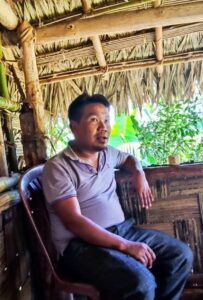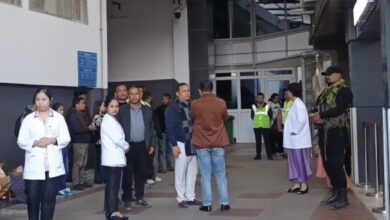Restricted calls
Rothell Khongsit of Kongthong says the village does not want frenzied tourism

As one enters Kongthong village, one can hear different tunes floating in the air, some only a few seconds long and some continue to reverberate in the hills. The tunes blend with the picturesque nature. Travel further inside the village and one can find the source of the tunes.
Kongthong in East Khasi Hills has gained popularity both in the country and outside for its tradition of ‘tune-names’. Every mother in the village assigns a unique tune to her child’s name. Individuals there are referred to by their tunes. This practice earned the village a place on the UNESCO shortlist for Best Tourism Village.
Now, the village is trying to promote tourism not only to generate employment but also to showcase its culture and tradition. Rothell Khongsit, the secretary of Indigenous Agro-tourism Society, has a road map.
It was a weekend when Team Sunday Monitor visited the village, which is surrounded by verdant hills. The road from Mawjrong to Kongthong is partially black-topped and some stretches are still dilapidated. The reporters spotted at least two tourist vehicles heading for the hamlet. “I saw a YouTube video on Kongthong and immediately put the place’s name on my list. Here we are enjoying the beauty,” said Sushmita Sordar from Kolkata. She was visiting Kongthong with her family.

“Our village is attracting the attention of tourists. But we have to be careful while promoting tourism,” said Khongsit, who is also the chairman of Kongthong Travellers’ Nest.
According to Khongsit, promoting tourism would be akin to preserving the village’s culture “as many people will come to know about it”. At the same time, there will be a source of income for the villagers.
There are about 10 tour guides in the village who are mostly educated unemployed youths. All of them have been trained by the Department of Tourism. There are cooks to cater to visitors staying in the traditional huts.
“However, it was not easy to convince villagers about tourism,” said Khongsit as he spoke about his journey as a tourism coordinator.
There are about 700 reidents in the village. Initially, many villagers were against tourists visiting the place as they thought it would ruin the sanctity of the place and bring in nefarious elements into Kongthong. After several awareness sessions, Khongsit made them realise that it was for a greater good.

“When the villagers met a few tourists who sat with them and ate the local cuisine and bought local farm produce, then the villagers realised that tourism will help them in the long run,” said the 32-year-old tourism coordinator.
At the same time, Khongsit is against unmindful tourism that would destroy the beauty of the village. He wants the village to be preserved as a heritage site and not a popular tourist destination. This is one reason why there are no signboards directing the route to Kongthong from Mawjrong. The first direction comes only after Khrang, another village that has a similar practice of calling by tune-names.
Kongthong, he said, does not have conventional tourist sites. “For a visitor, it will be an experience of the local life, the food and the natural abundance around. Not everyone understands that and we do not need everyone to come but only those who are sensitive and has a sense of aesthetics,” he explained.

Though the state government was earlier reluctant to develop the village, Kongthong’s adoption by Rajya Sabha MP Rakesh Sinha has added momentum to the development process.
Acknowledging the MP’s yeoman service, Khongsit said his intervention has made the state government active and “we are seeing change”. For instance, the road to Kongthong is being constructed and parts of it are already complete.
Sinha adopted the village in 2019.
The state government has also helped in the construction of the thatched accommodation for tourists.
“I did not want a concrete structure. I wanted the traditional huts for tourists. Of course, there will be modern amenities, like toilets,”

said Khongsit, adding that the government has to provide the basic development so that tourism can grow.
The Travellers’ Nest has two cottages, each with four beds and a traditional fireplace in the middle. There is another thatched structure for resting.
Sinha, who will visit the village on September 27, is also against rampant tourism, “which will be detrimental to the ecosystem of the village”. He said there must be guidelines for visitors. For instance, tourists should not be allowed to bring food to the village. “Both the culture and ecology of the place should be protected. Development should be sustainable. If tourism destroys this, then we should not encourage that,” said the MP.
Sinha’s initiatives

Sinha will inaugurate a gate at the entrance of the village that will act like a checkgate to control the number of visitors. He is also of the view that natural resource-based industry, like broom and honey, should be encouraged in the village and this could be a source of livelihood for the locals.
The MP is also taking women health and hygiene initiatives. A sanitary napkin vending machine and a napkin disposal machine will be set up in the village by the end of this month. “In the long run, I will introduce biodegradable sanitary napkins which will be made by the women of the village. We will also start a virtual clinic for redressing healthcare problems faster,” he added.
~ Team Sunday Monitor
Photos: Meghalaya Monitor




